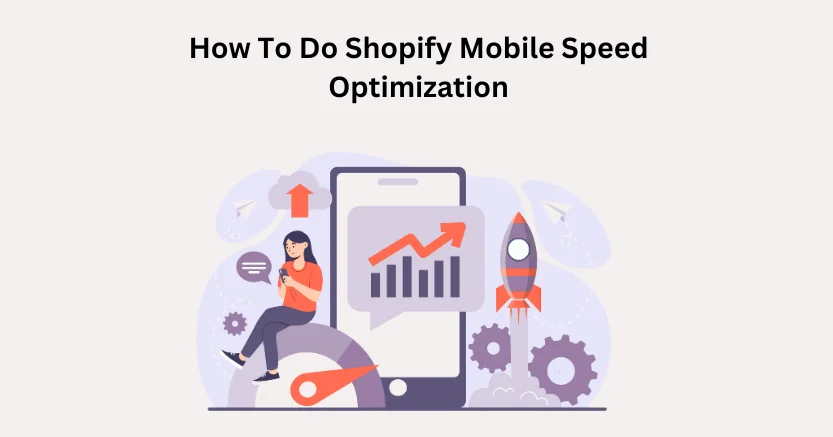Introduction
Are you looking for ways to increase Shopify site speed on mobile and other devices? You have reached the right spot. Here, we will explore the trending ways to boost Shopify’s mobile speed.
Although there are manual and professional ways to increase an online store’s speed, we will explore both here, so stay tuned and scroll.
How To Boost Shopify Speed On Mobile?
Speed Up, Stand Out, and Sell More – Fast!
Boost Shopify Mobile Speed Now
Optimize Images:
Speed Up, Stand Out, and Sell More – Fast!
Boost Shopify Mobile Speed NowMake your images smaller to boost Shopify’s mobile speed. Big photos make your website slow, especially on mobile devices. You need to squish and shrink your product photos to find the right size—small enough to load quickly but still looking nice and clear. Special tools can compress images without ruining quality. Also, use things like “srcset” to automatically serve different image sizes to other devices.
Leverage Content Delivery Networks (CDNs):
Use a Content Delivery Network (CDN). A CDN is like a bunch of computers worldwide that store copies of your website files (images, code, etc). When someone visits your store, they download those files from the computer closest to them instead of pulling them from your main server far away.
This makes everything load faster since the data doesn’t have to travel as far. Shopify has a built-in CDN, or you can use other paid CDN services.
Implement Code Splitting:
Split up your code into smaller pieces. Instead of one huge chunk of JavaScript code, you can break it into little bundles that only load when needed. That way, people don’t have to download your code to see the first page. This “code splitting” technique makes initial load times much quicker.
Minify CSS and JavaScript:
Squish your CSS and JavaScript. Programmers add a lot of extra spaces, line breaks, and notes in code to make it readable for humans. But those extra characters make file sizes bigger. “Minification” is like squeezing out all those unnecessary bits so the code files become tiny and load faster.
Lazy Load Non-Critical Assets:
Lazy load things you don’t need right away. Let’s say you have a page with a million product photos. Instead of loading all those huge images simultaneously, you can “lazy load” them, only downloading the first few images someone will see on their screen. As they scroll down, it’ll keep loading more images as needed. This makes the initial load crazy fast and crucial for online store speed optimization.
Optimize Third-Party Scripts:
Check all your extra tools and apps. Many websites use extra tools or scripts for things like analytics, chat boxes, and more. But sometimes, these tools can really slow down your website by adding extra code. Go through and remove any extras you are not using. For important tools, try to delay when they load so your page can load first.
Leverage Browser Caching:
Let browsers cache your files. Caching means storing some of your website files, like images and code, on someone’s phone or computer after they first visit. That way, their device doesn’t have to re-download all those files whenever they return later. It’s like skipping some steps for a faster load. Just tell browsers which files are okay to cache.
Prioritize Critical CSS:
For Shopify mobile speed optimization, load only the most important styles first. You have got a big old CSS file with all your website’s styles, right? Well, you can split that up and load just the most critical, need-it-right-away styles before the rest. The first part of the page will load much faster while the rest continues loading.
Preconnect to Required Origins:
Connect to other web addresses sooner to boost Shopify speed on mobile. Sometimes, your website has to load files or information from other websites, like fonts or tracking codes. But connecting to those outside web addresses can take a little time. “Preconnecting” tries to get a headstart by already improving your browser to those other web addresses so things can load instantly when it’s time.

Want to read this blog offline?
No worries, download the PDF version
now and enjoy your reading later…
 Download
PDF
Download
PDF
Optimize Web Fonts:
Serve only the font characters you need. Custom web fonts are great for branding but can slow mobile load times. That’s because your visitor’s browser must download entire font files to display some words. You can minimize those files by stripping out any unnecessary characters or font variants you don’t use and optimizing online store speed.
Implement Server-Side Rendering (SSR):
Render pages on your server. Normally, websites have to load all the code and then render or “build” the visible page on someone’s device. Server-side rendering does that code-to-page work on your server instead of just sending the ready-made page. This avoids lots of work on the visitor’s device for faster loading.
Audit and Monitor Performance:
Use tools to regularly check how fast or slow your mobile website loads. Look for areas that need more optimization work or new issues that pop up over time. Consistent testing is key to keeping things blindingly fast.
Explore Progressive Web Apps (PWAs):
Build a Progressive Web App (PWA). PWAs use modern browser technology to create website experiences that feel more like phone apps, installable, offline access, push notifications, etc. They leverage smart script management and efficient rendering to provide lightning-quick load times on mobile.
Use Plain, Pre-Installed Fonts:
Fancy custom fonts look stylish but require extra files to be downloaded before any text appears. This really slows things down on mobile. An easy speed boost is using simple, pre-installed system fonts like Arial or Times New Roman, which are already on everyone’s phones and tablets.
These render instantly without downloading anything extra and boost Shopify’s mobile speed. If branding matters, you can still use custom fonts for titles while keeping regular text as basic system fonts.
Avoid Animated GIF Overload:
Animated GIF images look cool but use a lot of data and slow down mobile performance. Large looping GIFs, especially at the top of pages, make browsing very slow on phones and tablets. Where possible, remove unnecessary animated GIFs in favor of basic images or lightweight video to keep file sizes minimum.
Use Shopify’s Fast Mobile Pages:
Slow mobile speeds often happen because full desktop website pages are just way too bloated for mobile devices to load quickly. Shopify has a “Fast Mobile URLs” option that automatically strips pages down to a leaner, more efficient, mobile-friendly version when viewed on phones and tablets. It removes unnecessary code and resources, making it faster to load on cellular connections and quicker to display.
Conclusion
By following the strategies discussed, you can directly boost Shopify’s speed on mobile and other devices. This will increase your brand ROI, business recognition, and sales and bring other advantages.
Additionally, you can use a Shopify mobile speed optimization tool for more precise results. One is Website Speedy, a SaaS-based speed optimization tool that improves site loading speed up to 5x in just five minutes. Website Speedy does multiple tricks to fix slow speed issues and boost it.
June 4, 2024
Leave a Comment


































